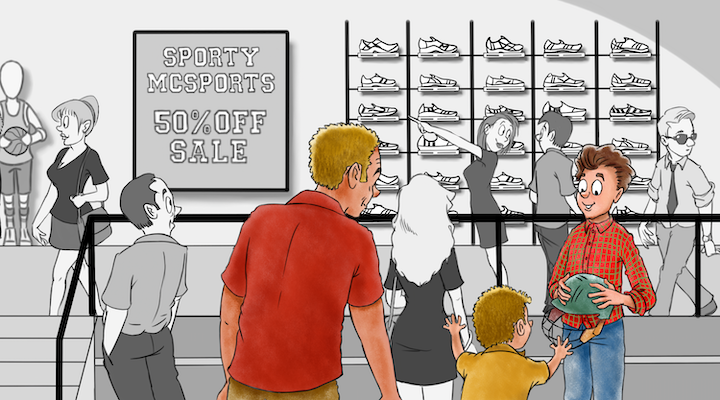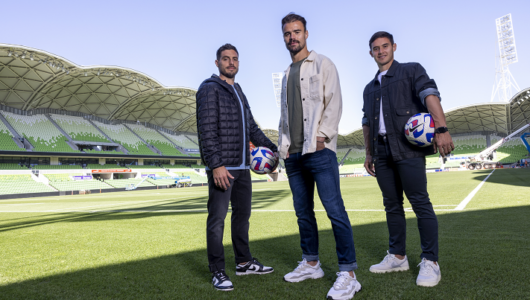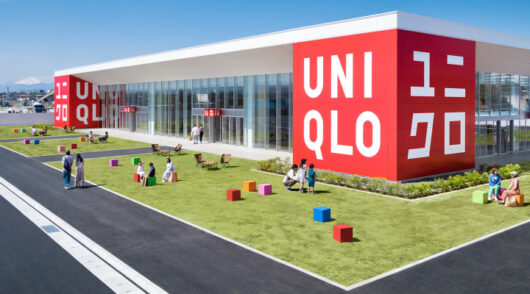With Gen Z now dominating the ranks of Australian retail workers, traditional learning models are failing to deliver for businesses. Now retailers are turning to new digital techniques that boost retention – and their bottom lines.
Mark Eggers, co-founder of Yarno – the tech company that created a gamified team-based learning solution aimed at retail workers (and others who don’t sit behind a desk all day) – says businesses relying on outdated training formats are missing upselling opportunities. All too often, employers are discovering what their team members do not know through low sales, errors, accidents and breaches of company policy.
“The ‘one-and-done’ learning method has been proven not to work,” he explains. “Multiple studies have shown that within an hour you’ve lost 50 per cent of the information you’ve just learned and within one month, you’ve lost up to 90 per cent.”
Traditional learning methods often have overwhelming volumes of information, courses that run too long and which use outdated formats such as emails, PDFs and PowerPoint documents. The result, he says, is poor knowledge retention, minimal insights, low engagement and wasted resources of time and money. Even 11 years ago, educational researcher Dr Katy Jordan discovered that the average completion rate for open, six-week online courses was just 15 per cent.
“We are looking at ways to get across more engaging learning content because most retail workers are younger and these younger generations ingest media differently to you and me,” Eggers told Inside Retail. “We’ve got to get the information in a format that they’re used to. Text on a page doesn’t work, so ideally, you can use video and text as a combo with something fun to make it engaging.”
Yarno specialises in a gamification approach – applying mechanics, tools and techniques used in game design throughout the learning process to improve the speed of retention, engagement, and quality of the learner’s experience.
Delivered as a multiple-choice quiz, employees can complete them in a designated time behind the scenes or – as many prefer – on a train or bus on the way to work.
These typically take the form of two to three-week-long campaigns with daily sub-three-minute Q&A sessions delivered by their platform that uses repetition to help educate staff about almost anything – especially new products, promotions or procedures to deal with customers in stores.
Workers might be asked about the features of newly released products, for example. Any answer they get wrong will be corrected and repeated in a few days, and a question answered correctly twice over the learning period will be ‘retired’ because it is clear the staff member has recalled the answer. This is a learning style called spaced repetition that Eggers says is proven to embed and reinforce knowledge. It also helps retailers identify knowledge gaps among their staff.
Alex Barry, project manager – customer & team experience at Supercheap Auto, Australasia’s largest automotive business with 300 stores and 3800 team members – agrees. “Traditional training doesn’t show us what they originally knew or didn’t know or how they retained that knowledge over time. Supercheap identified low-performing product areas and worked with Yarno to create campaigns targeting those areas.”
One campaign improved team members’ knowledge and confidence in advising customers about auto paint and panel supplies. By the end of the campaign, the retailer’s Net Promoter Score (NPS) rose nine points in just six weeks, with the score in the paint and panel category at its highest ever. Almost 50 per cent of the stores exceeded their sales targets for the period.
Team-based learning drives completion rates
A key component in these courses is the team-based approach that can foster better relationships within groups of staff across a retail network, pitching not just individuals against each other, but store or state teams, with a leaderboard and incentives.
“The team leaderboard for me is the larger driver because you are intrinsically motivated to want to help your team out. It’s a very Australian thing to want to pull your socks up for your mates, and get on with the job.”
Yarno’s customers see course completion rates of above 85 per cent due to the engaging nature of the content and a fostered spirit of team competition.
Winning Group has seen an increase in sales of some products ranging from 20 and 40 per cent after deploying gamified app-based training modules. Another customer reported a 66 per cent decrease in accidents within its logistics operations.
Edu-toks counter short attention spans
Another technique is short-form videos typically lasting less than 30 seconds, which Yarno dubs Edu-toks, a play on TikTok. “These are an engaging way to counteract increasingly shorter attention spans among learners and get key points across. They can be tailored to front-of-house or behind-the-scenes staff. For example, a forklift driver might point to different parts of the screen where distribution centre safety tips are displayed.
“It doesn’t have to be super complex, but the alternative to that would be four bullet points on a page talking about forklift tips,” continues Eggers. “Our version is more enjoyable and relevant because the character in the video is someone they work with. It’s not some generic safety tips the company might have borrowed from another platform and tried to make relevant.”
With an estimated 70 per cent of workers nominating training as a top priority in their work, most workers get less than 24 minutes a week of formal training. One of the reasons for this in a retail business is it can be difficult to teach staff unless you pull them off the shop floor.
“That’s why big retailers – like Rebel, BCF, and Winning Appliances – use us, because we can deliver it in a format that can be done very quickly and at a time the worker wants to. Retailers have traditionally found it very difficult to get staff in a room because they have both casual and shift workers. If you have 300 stores, how are you going to do that at scale? It’s an expensive exercise and we have made it very cost-effective to achieve mass-scale training.”
Eggers says using high-tech, cost-effective learning models is critical in learning and development programs (L&D) at a time when many companies are trimming budgets. “It is one of the first things the CEOs strip out of the budget in a downturn because it is a short-term win on the books. Companies like us can work with their experts on the subject matter, and take the heavy lifting around the content and production at a lower rate than they can achieve with internal resources.”
Of course, as some retailers’ experiences with Yarno demonstrate, budgeting for learning and development need not be considered an expense. If sales are increased, productivity improves, accident rates fall and customers report greater satisfaction with a brand, such spending should be considered an investment with an easily identifiable return rather than a necessary expense.
- To learn more about Yarno’s tech-based learning solutions, take a look at the company’s website.






